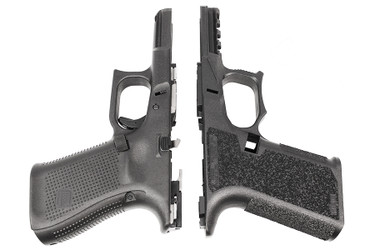P80 vs GLOCK Frames: What's Different?
Posted by 80-Lower.com on Mar 23rd 2023
Polymer80's frames -- and the handguns that are built on those frames -- have gained popularity among mainstream firearm owners. These frames and guns easy to customize, and they use GLOCK parts. But P80-based pistols are not identical to modern, Gen 5 GLOCK pistols. That's because they use "Gen 3" (older) GLOCK parts.
Polymer80 vs. GLOCK Frames & Parts
So, what are the differences between Polymer80 (Gen 3) frame parts and factory GLOCK (Gen 5) frame parts? Is one better than the other? Let's take a look, then we'll answer some questions.
For this comparison, we're looking at a standard GLOCK 19 frame, and its P80 equivalent, the PF940C frame.
P80 vs GLOCK Frame Shapes & Mag Button
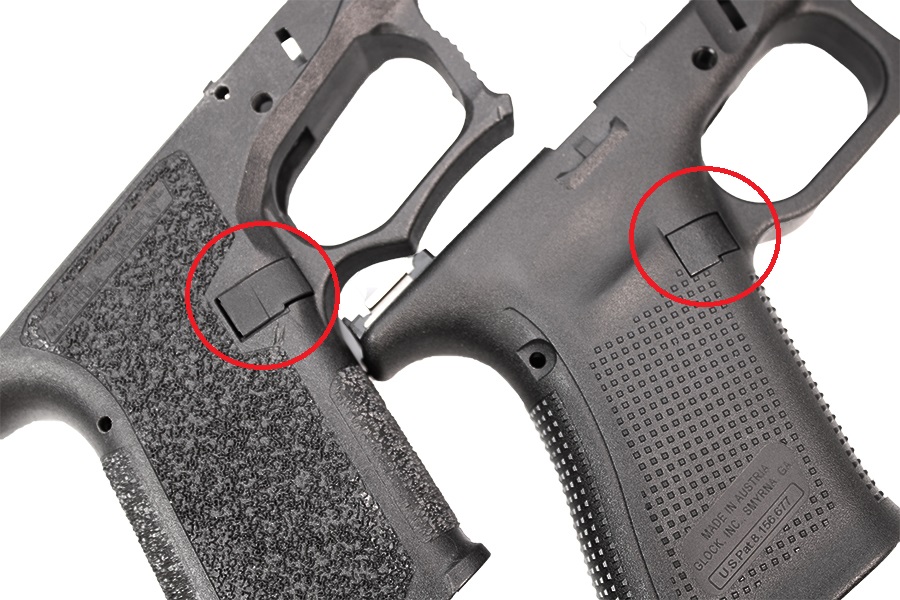
Looking at the exterior of both frames, we can already see some pretty big differences: The factory GLOCK frame's "Gen 5" magazine button (pictured right) is much smaller than the P80's "Gen 3" button (pictured left).
The Polymer80 frame has random-patterned stipling that provides more grip than the factory GLOCK frame. It's also less bowed near the palm, with a smaller flare at the magazine well.
We can also see the P80 frame's trigger guard is larger and molded with finger grooves. The factory GLOCK's trigger guard is smaller and simpler.
Lastly, the trigger mechanism housing pin hole is recessed on the factory GLOCK, while it sits flush on the backstrap of the Polymer80 frame.
Importantly, though, both frames' trigger mechanism pins are the same diameter.
P80 vs GLOCK Trigger Shoe & Trigger Bar
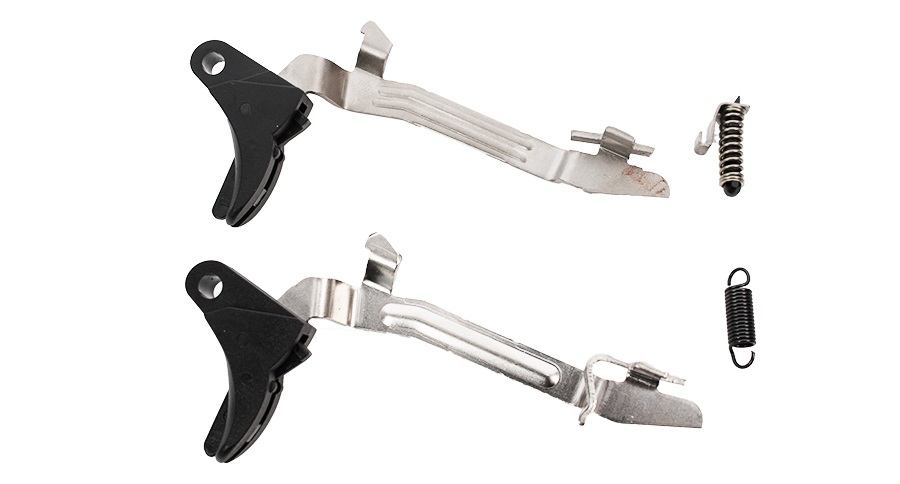
The GLOCK trigger shoe, trigger spring, and bar are pictured top. The P80's assembly is pictured bottom.
The factory GLOCK's and P80's trigger shoes are practically identical. Both trigger bars are the same length and general shape. But that's where similarities end.
The P80's trigger spring is a simple coil with two hooks on either end. The GLOCK's "Gen 5" trigger spring consists of a more complicated three-piece assembly: A spring captured by a small polymer guide rod, and a metal hook.
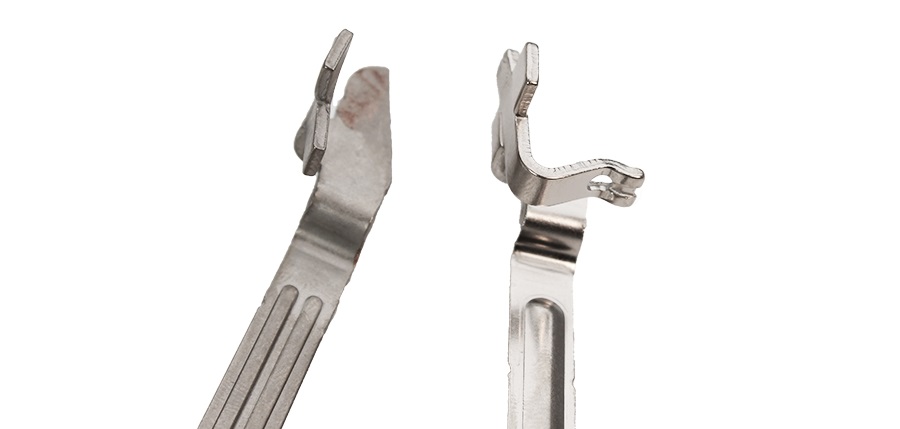
On the P80 trigger bar (pictured right), one of its trigger spring's metal hooks connects with a curved metal tab with a hole, which is fabricated as an integral part of the trigger bar itself.
On the Gen 5 GLOCK trigger bar (pictured left) the metal spring tab is flat, with no hole. The flat tab instead interfaces with the small metal hook on the new, three-piece trigger spring.
P80 vs GLOCK Trigger Mechanism Housing
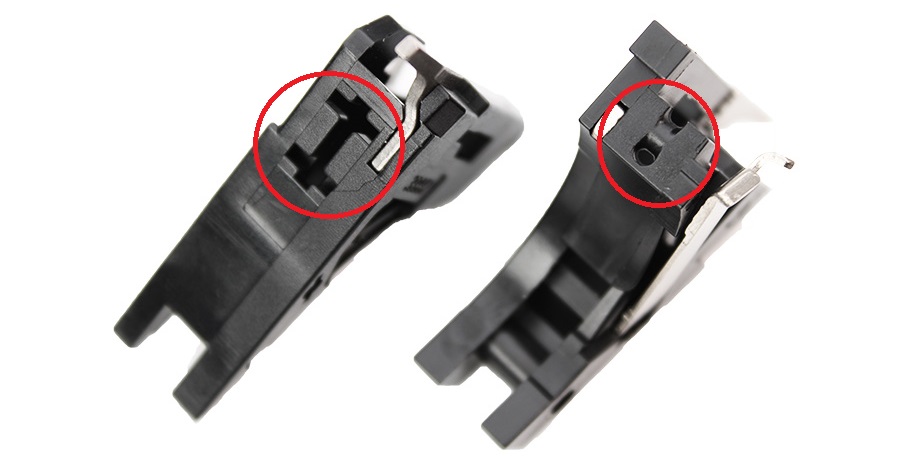
Taking a closer look at both frames' trigger mechanism housings, we can see the clear differences in how the trigger springs interlock with both units.
On the GLOCK's housing (pictured left) we see the channel wherein the three-piece trigger spring's anchor slides into place.
On the Polymer80's housing (pictured right) we see a simpler hole wherein one of the trigger spring's hooks gets captured.
Importantly, the GLOCK's spring anchor is located at the front of the mechanism housing, underneath the ejector. This updated design causes the trigger spring to be compressed when the trigger is pulled, which is why it requires a guide rod.
The P80's spring anchor is located at the rear of its housing. Because of its design, the trigger spring is decompressed and stretched with each trigger pull, eliminating the need for a spring guide rod.
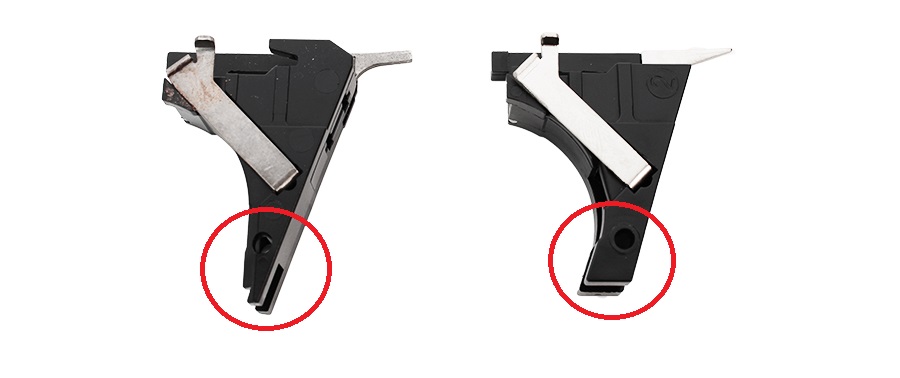
The physical size and shape of both pistols' trigger mechanism housings are different, too: The factory GLOCK's housing is longer, with thinner leads terminating underneath the mounting pin holes. The P80's housing is shorter, with flatter, wider leads terminating under its mounting pin holes.
We can also see a difference in the shapes of the ejectors at the top right of each housing: The P80's ejector is longer and terminates at a triangular point, while the newer Gen 5 GLOCK's ejector terminates in a slightly shorter, flat tip.
Both housings' connectors -- the diagonal metal tabs running alongside the housings -- are identical.
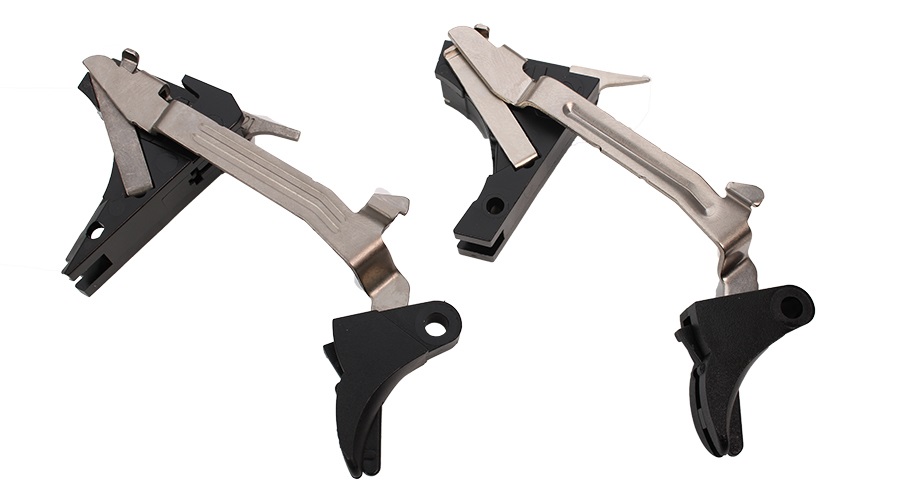
When assembled, both frames' trigger units appear identical, too. But the subtle differences noted above mean they are not interchangeable between frames. Some users claim the Gen 5 trigger housing and trigger shoe can fit in the Polymer80 frame.
But this requires cutting both assemblies with a Dremel. Any benefit of using a Gen 5 trigger in the Polymer80 frame is negligable, at best. More on that at the end of this guide.
P80 vs GLOCK Slide Catch Levers
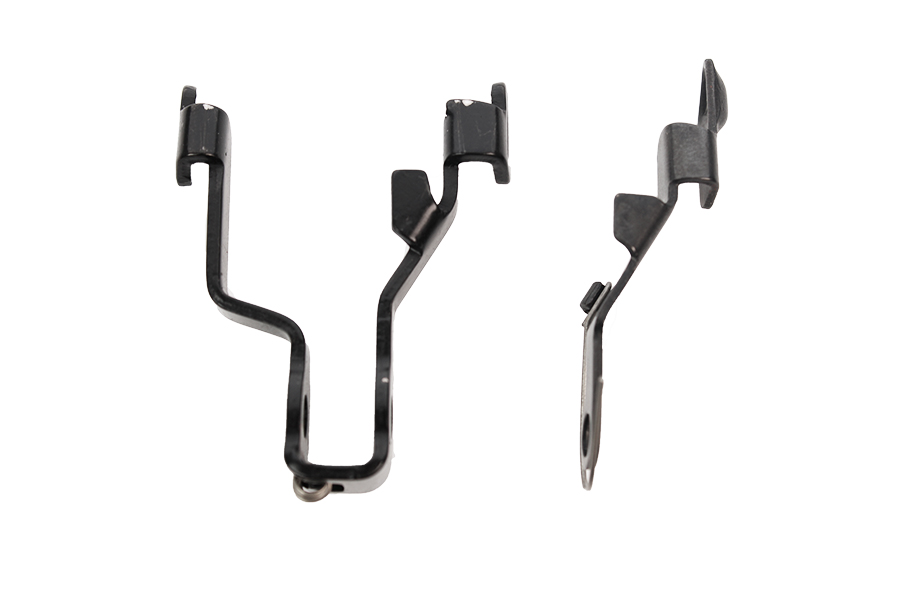
Perhaps the greatest advancement found in the Gen 5 GLOCK is the introduction of an ambidextrous slide catch and release (pictured left). This updated design provides thumb-actuated levers on both sides of the factory GLOCK frame. This provides a clear advantage for left-handed shooters.
Pictured right, the Polymer80 slide catch comprises a single lever found only on the left side of the frame, which is intended to be used by right-handed shooters.
The factory GLOCK's slide catch uses a conventional coiled spring, while the P80 slide catch uses a single piece of thick, curved steel wire to form the lever spring.
Lastly, the GLOCK's upgraded lever eliminates the need for an extra pin hole; it is secured using the locking block pin.
The P80 lever, however, is secured with its own, smaller pin.
P80 vs GLOCK Slide Lock
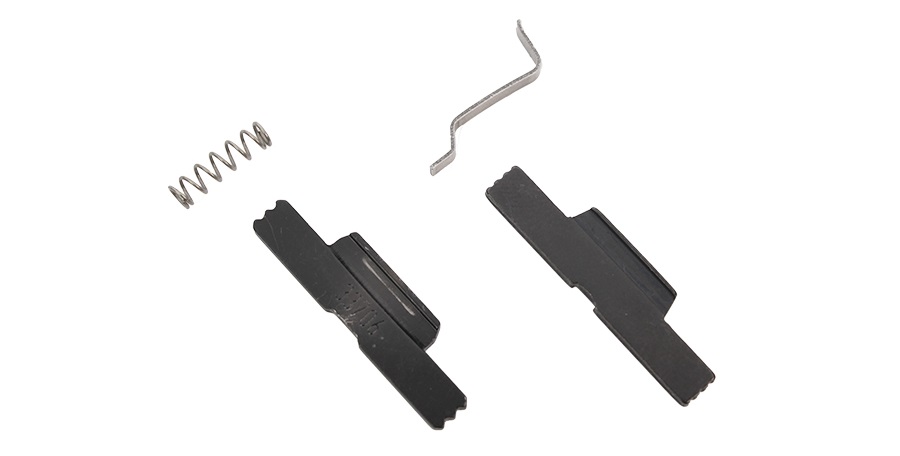
Both the Gen 5 GLOCK and Gen 3 Polymer80 slide locks are identical in shape, form, and function. The only difference between the two units is found in the springs.
The GLOCK's slide lock spring utilizes a conventional coil, while the P80's slide lock spring is formed from a bent piece of spring steel.
P80 vs GLOCK Locking Block & Rear Rail Module
Last, but not least, are the greatest functional differences between the Gen 5 GLOCK frame, and the Polymer80 frame: The locking block rail systems and rear rail modules, which provide the mounts and pin hole seats for both pistols' other components, including the trigger assemblies and slides.
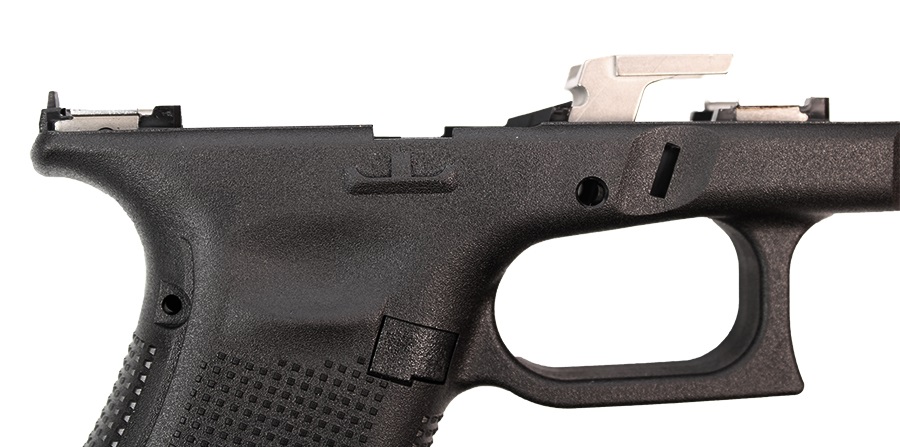
Pictured above, the factory GLOCK's rear rail module and the front half of its locking block rail system are physically molded into the frame itself. That means the factory GLOCK's rear rail module can never be removed, and only half of its locking block rail is removable.
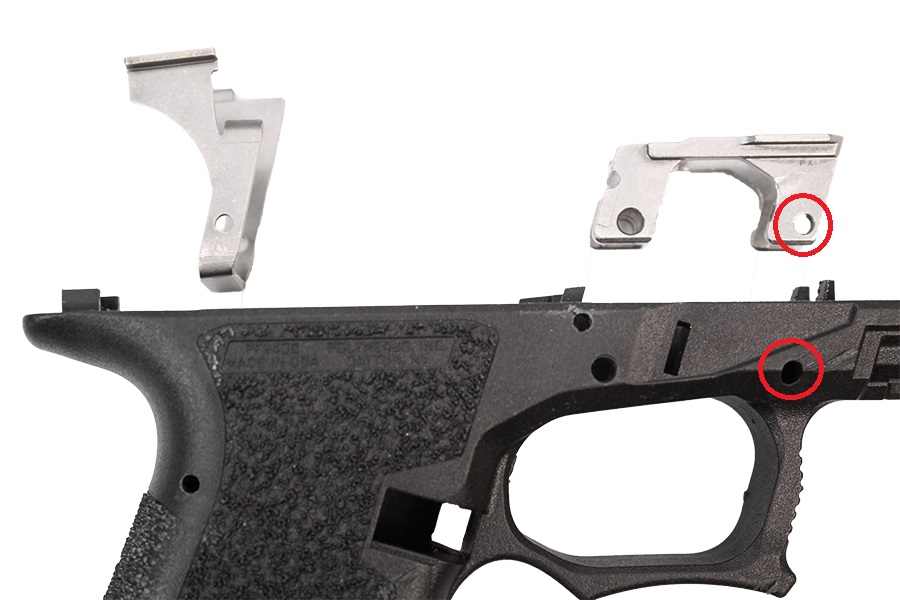
The Polymer80 pistol's rear rail module and locking block rail systems are, however, both entirely separate components from the frame itself. That means both units can be removed and replaced or upgraded.
That also means the Polymer80 frame requires one additional pin hole (circled above, in red) to be drilled just above the trigger guard. This extra pin is required to secure the front portion of the locking block rail system to the frame.
P80 vs GLOCK: Which is Better?
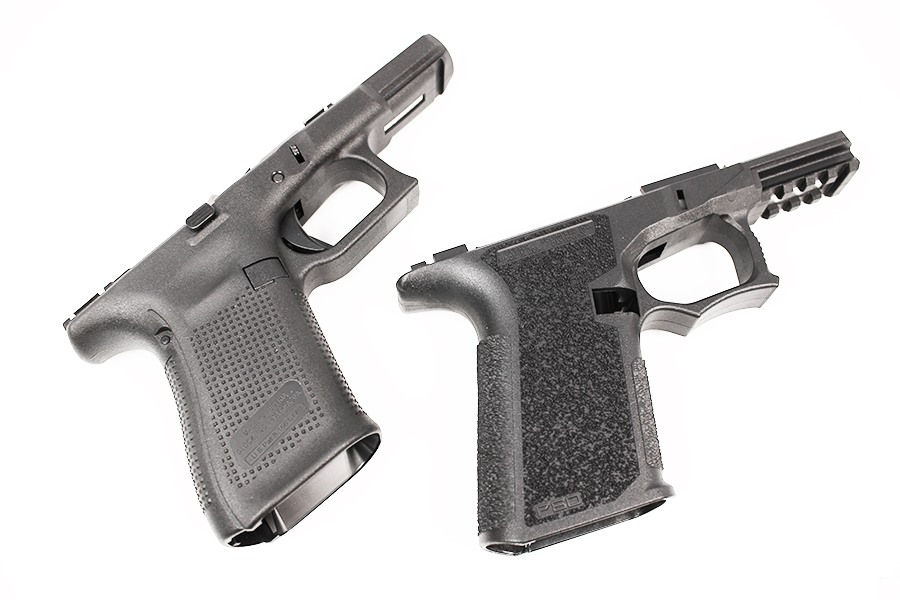
We're not just saying this because we sell Polymer80 frames and Gen 3 parts: Many shooters prefer the P80 pistol over the Gen 5 GLOCK.
Why do some prefer the P80 frame?
Some shooters who own both pistols say they prefer the shape, stipling, and grip on the Polymer80 frame. Other say they prefer the trigger guard on the P80 frame for its arguably better ergonomics and finger grooves.
Some also prefer P80 triggers over GLOCK triggers.
Although the latest GLOCK provides an ambidextrous slide lever, some say the Polymer80's trigger feels "snappier" and breaks more cleanly.
GLOCK frames only need two pins. P80 frames use four pins.
Because of its updated slide catch lever and integrated locking block, the Gen 5 GLOCK uses just two pins to secure its frame's internals. The Polymer80 requires four pins to secure all its internal components.
The Polymer80 might still be more reliable.
Two important wear components found on the Polymer80 frame -- the locking block and rear rail module -- can be replaced. If the locking block and rear rail module tabs on the factory GLOCK are damaged or wear out, the frame cannot be repaired. That's because neither component is removable.
Both pistols' slides are nearly identical.
Lastly (although we didn't cover it here) both pistols' slides and barrels substantially similar. Both function identically. The only major difference between the Polymer80 slide and GLOCK slide is found in the operating rod and recoil spring: The Gen 5 GLOCK's rod uses two recoil springs, and is said to provide slightly better recoil control.
Want to build a P80?
Start here: Grab a Polymer80 frame, and cut and drill it. Then grab a build kit to get all the parts you need to assemble the frame into a working pistol.
DISCLAIMER: If you are new to the world of DIY gun building, you likely have a lot of questions and rightfully so. It’s an area that has a lot of questions that, without the correct answers, could have some serious implications. At GunBuilders.com, we are by no means providing this content on our website to serve as legal advice or legal counsel. We encourage each and every builder to perform their own research around their respective State laws as well as educating themselves on the Federal laws. When performing your own research, please be sure that you are getting your information from a reliable source.

